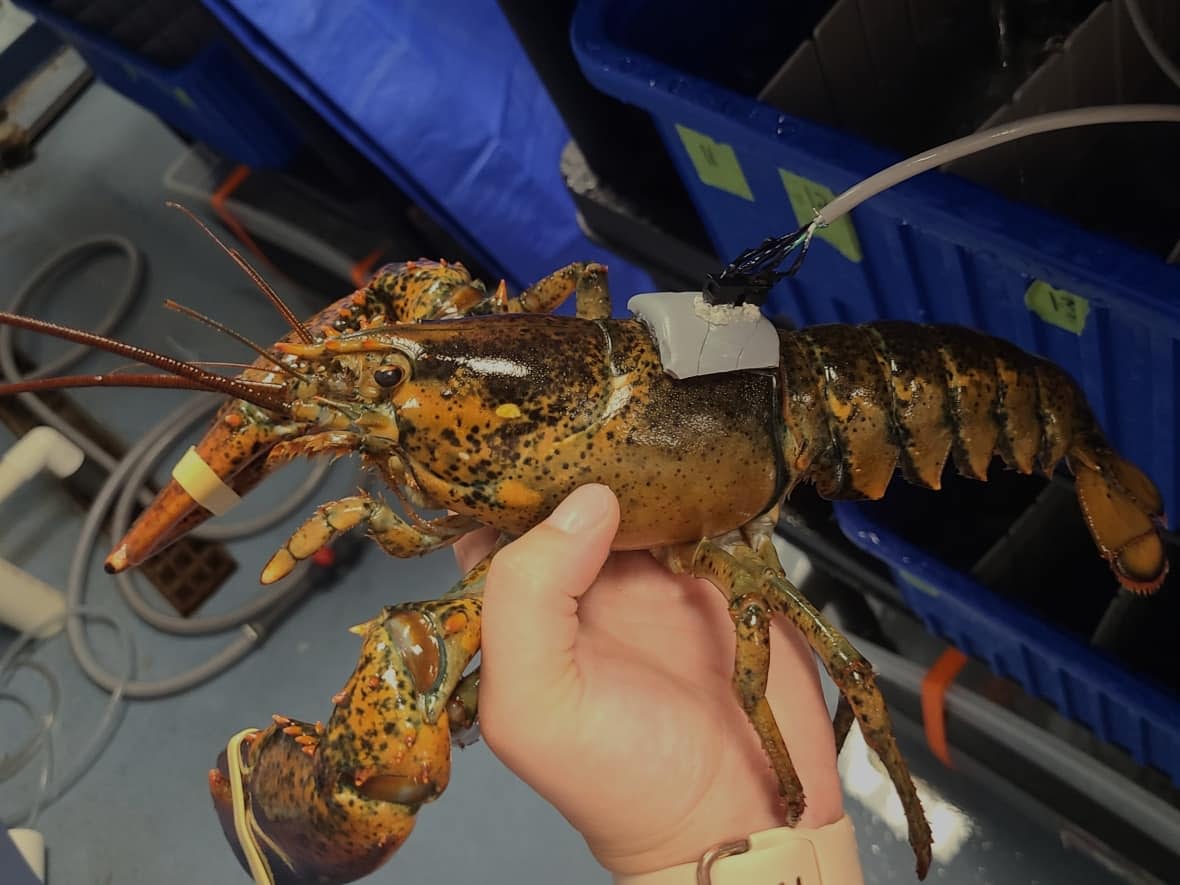Study suggests lobster may be able to adapt to warming ocean temperatures

New research from Atlantic Canada indicates lobster may be able to cope with warming ocean temperatures.
The results were presented this week at the 30th annual meeting of the Fishermen and Scientists Research Society, a Nova Scotia non-profit organization that helps co-ordinate collaborative research on Atlantic fisheries.
The Centre for Marine Applied Research in Dartmouth, N.S., collected 240 lobsters from six different fishing areas around Nova Scotia and Prince Edward Island in May and June 2022.
Some were placed in colder water at 5 C, others in 15 C water.
Lobsters that acclimated to the warmer water were better able to tolerate higher temperatures than lobsters that got used to cold water.
And that could be important, says Ryan Horricks, a research scientist with the centre.

"In warming oceans, we're going to see sea surface temperatures and sea bottom temperatures increase overtime due to the effects of climate change," he said. "So to me, this was a really encouraging study and an encouraging result because we found that lobster can in fact acclimate or change their thermal maximum to these warmer temperatures."
Lobsters acclimated to 5 C had a maximum tolerance for water at 25.7 C, while lobster in 15 C had a thermal maximum of 29.6 C.
Horricks is quick to say the results do not mean lobster will be immune to the effects of climate change. Among the potential impacts: physiological stress and disease because of higher temperatures, northward expansion of warm-water predators, and lobster migration away from warmer water.
Still, Horricks believes the rate of temperature increases in the ocean could be slow enough to give the crustaceans time to adjust.
The findings have not yet been published in a peer reviewed journal.

The release comes as Fisheries and Oceans Canada posted its latest lobster-stock assessment for eastern Nova Scotia, where inshore water temperatures remain relatively cool.
"In the east we are seeing that generally, year-on-year, populations are getting better and better, healthier and healthier and we're seeing record, or near record catch rates for the last number of years," said Ben Zisserson, a scientist with the department.
Steady increase in catch rates
The assessments encompass lobster fishing areas 27 to 32 — from the top of Cape Breton to Halifax.
"I think people have in their mind this picture that the lobster are picking up and grabbing their bags and heading east or heading north in this respect. I don't think that's going on. I think the conditions are just becoming more favourable," he said.

Zisserson said the population increases in eastern Nova Scotia are significant.
"East of Halifax, since the late '90s we've seen a steady increase in catch rates. There are some ups and downs but generally, year-on-year, the landings just keep increasing," he said.
MORE TOP STORIES


